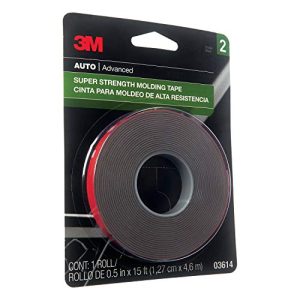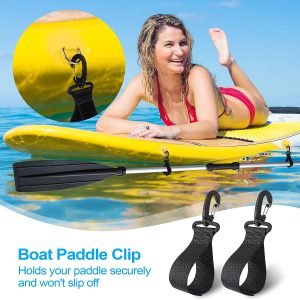Contents
The world of boating is rich with terminology and specific measurements that are crucial for both the design and functionality of a vessel. One such critical measurement is the beam of a boat. While many enthusiasts and professionals use this term regularly, its full implications and importance might not be universally understood.
Definition of a Boat’s Beam
The beam of a boat refers to its widest point as measured at the waterline. Essentially, it is the maximum width of the boat. This measurement is fundamental in boat design and has significant implications for various aspects of a boat’s performance and usability.
Importance of the Beam in Boat Design
The beam is one of the primary dimensions considered during the design phase of a boat. Its importance stems from several factors, including stability, space, and hydrodynamic efficiency. Let’s delve into each of these aspects:
1. Stability
A wider beam generally enhances the stability of a boat. Stability is critical for the safety and comfort of passengers, especially in rough waters. Boats with a wider beam have a lower center of gravity, which reduces the likelihood of capsizing. This is particularly important for vessels that are expected to navigate in open waters where waves and weather conditions can be unpredictable.
2. Interior Space
The beam directly influences the amount of usable interior space on a boat. A broader beam allows for more spacious cabins and decks, which can improve comfort and functionality. This is especially crucial for boats used for long-term cruising or living aboard. A wider beam can accommodate more amenities and storage, making the vessel more livable.
3. Hydrodynamic Efficiency
While a wider beam can improve stability and space, it can also impact the hydrodynamic efficiency of the boat. A broader beam increases the water resistance (drag) when the boat is moving. Designers must balance beam width with the boat’s intended speed and fuel efficiency. For instance, racing boats tend to have narrower beams to reduce drag and achieve higher speeds.
Measuring the Beam
Measuring the beam of a boat is straightforward but precise work. The measurement is taken at the widest part of the boat, typically at the deck level, and specifically at the waterline. Accurate measurement is essential for determining the boat’s capacity and stability characteristics.
Types of Beams
Different types of boats have beams designed to suit their specific functions. Here are a few examples:
1. Narrow Beams
Boats with narrow beams, such as racing sailboats, are designed for speed and agility. The reduced drag allows them to slice through the water more efficiently, achieving higher speeds. However, these boats may sacrifice some stability and interior space for their performance-oriented design.
2. Wide Beams
Boats with wide beams, such as pontoon boats or trawlers, prioritize stability and space. These boats are typically more comfortable and safer for leisure activities and long-term cruising. They are less likely to capsize and offer more room for passengers and cargo.
Impact of Beam on Boat Performance
The beam of a boat significantly impacts its performance in various ways. Here are some key performance aspects influenced by the beam:
1. Speed and Maneuverability
A wider beam can slow down a boat due to increased water resistance. However, it can also provide more stability during high-speed maneuvers. Narrower beams reduce drag and allow for higher speeds and sharper turns, but they can be less stable, particularly in rough conditions.
2. Stability and Comfort
As mentioned earlier, a wider beam enhances stability, making the boat more comfortable, especially in choppy waters. This is why many cruising and fishing boats have wider beams to ensure a smoother and more stable ride.
3. Capacity and Space
The beam affects the interior layout and usable space on a boat. Wider beams allow for larger cabins, more storage, and greater deck space. This is beneficial for activities that require more room, such as entertaining guests, fishing, or extended voyages.
Design Considerations
When designing a boat, naval architects must consider the beam in conjunction with other dimensions and design elements. Some critical considerations include:
1. Intended Use
The boat’s intended use plays a significant role in determining the appropriate beam. For instance, a racing sailboat will have a different beam than a luxury yacht. The designer must balance speed, stability, and space according to the boat’s primary function.
2. Structural Integrity
A wider beam requires robust construction to maintain structural integrity. The hull must be designed to handle the stresses associated with a broader shape, especially in rough seas. This often involves reinforced materials and advanced engineering techniques.
3. Regulatory Compliance
Different regions and countries have regulations governing boat dimensions, including beam width. Designers must ensure that their boats comply with these regulations to avoid legal issues and ensure safety.
Practical Implications for Boat Owners
For boat owners, understanding the beam of their vessel is crucial for various practical reasons:
1. Docking and Storage
The beam affects where and how a boat can be docked and stored. Marinas and storage facilities often have beam restrictions. Knowing the exact beam measurement helps in choosing appropriate docking spaces and storage options.
2. Trailering
For boats transported by trailers, the beam is a critical factor. Wide-beam boats may require special trailers and permits, particularly if they exceed standard roadway width limits. This can add to the cost and complexity of transporting the boat.
3. Navigation
The beam can influence a boat’s ability to navigate certain waterways. Narrow channels, locks, and bridges may have width restrictions that limit access for wide-beam vessels. Understanding these limitations is essential for planning routes and avoiding navigational challenges.
Examples of Boats with Varied Beams
To illustrate the diversity of beams across different types of boats, let’s look at a few examples:
1. Sailboats
- Racing Sailboats: Typically have narrow beams to enhance speed and maneuverability. Their design focuses on minimizing drag and optimizing performance.
- Cruising Sailboats: Often have wider beams to provide more interior space and stability. This makes them more comfortable for long voyages.
2. Powerboats
- Speedboats: Feature narrow beams for high-speed performance. They prioritize speed and agility over stability and space.
- Trawlers: Have wide beams to maximize living space and ensure stability. They are designed for long-distance cruising and comfort.
3. Fishing Boats
- Bass Boats: Generally have moderate beams to balance speed and stability. They are designed for inland fishing and often have features tailored to anglers.
- Sportfishing Boats: Tend to have wider beams to provide a stable platform for fishing in open waters. They also offer ample space for gear and passengers.
Conclusion
The beam of a boat is a fundamental measurement that influences its design, performance, and functionality. From enhancing stability and interior space to impacting speed and hydrodynamic efficiency, the beam plays a crucial role in shaping the boating experience. Whether you are a boat designer, owner, or enthusiast, understanding the significance of a boat’s beam can help you make informed decisions about the vessels you design, purchase, or use.











